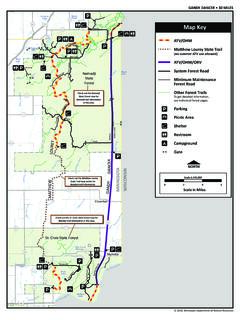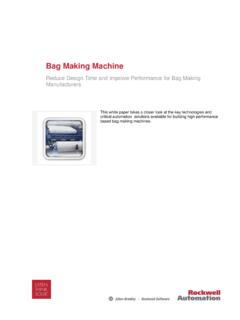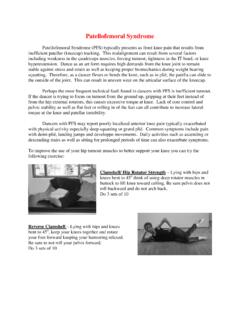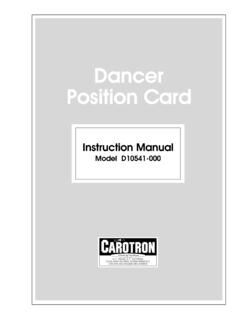Transcription of WINDER/UNWIND TENSION CONTROL - Blackhawk Controls
1 WINDER/UNWIND TENSION CONTROLYou may know them as winders, rewinds, recoilers or take-ups; likewise, you may know them as unwinds, uncoilers or pay-offs, but they are all the same subsection of web handling. Winders and unwinds are a critical portion of the web handling process. The acceleration, deceleration loading and unloading times need to be minimized, while maintaining quality. Also, accurate TENSION CONTROL at both ends of the process allows better process CONTROL throughout the machine. Contrex (many still call us by our old name Fenner) has been a fixture in the web handling industry for over four decades. This industry has evolved over those years and Contrex has evolved right along with it. As web manufacturers produce higher quality products, at higher speeds, the precise CONTROL that Contrex controllers provide has changed from being a convenience for the operator to being a necessity. As a side benefit, better TENSION CONTROL frequently yields (almost surprising) indirect improvements, particularly on printing, packaging and other registration type operators can get the best possible performance out of a marginal TENSION CONTROL system, by various frequent adjustments to that fickle system.
2 By changing the TENSION CONTROL to a better suited method, far more accurate and consistent TENSION result while not requiring ANY operator white paper builds from the most basic CONTROL methods up to more complicated systems. The reader may skim the simple topics and jump to more advanced CONTROL methods. Please consult with Contrex regarding the best method for your particular machine. Contrex s policy is to choose the least expensive (including set up costs) option that gets the job done comfortably. Our application engineers have decades of experience across a broad range of Contrex products are a family of very precise speed controllers that give very accurate, easy-to-set process CONTROL . These products start out with percent accuracy in speed mode and true zero-error in follower mode. By allowing inexpensive 60 PPR ring kits or higher resolution surface speed encoders, they are flexible across a broad range of web applications.
3 Often the Contrex controllers can save significant money by optimizing the performance of much lower cost motors and drives. In other words, higher cost, higher performance drives may not be required in a given application if the right CONTROL system is used. Jim Berglund Contrex Inc. 1-800-342-4411 Revision MOTORDRIVEMOTORCLAMP/ SPLICE}DRIVEMOTORIZED ACCUMULATOR MOTORMOTORDRIVEDRIVEPROCESSBRAKEC ontrex Inc. 1-800-342-4411 this simple example, the MLP-Trim Controls the line speed of this simple, single motor process. As the diameter builds, the MLP-Trim slows down the motor, keeping the surface speed at the 560 feet per minute displayed. This center-driven setup avoids the complexities of a surface driven winder . The MLP-Trim is acting as a smart speed potentiometer to the variable speed drive. As shown, the encoder could be right on the roll surface or it can be connected to the last idler before the rewind roll.
4 A variation of this is a Time in an Oven application. The MLP-Trim (and MLP-Drive) allow inverse scaling so the setpoint of the MLP-Trim would be entered in minutes or seconds. A setpoint of would run the web at twice the speed compared to a setpoint of Naturally, speed accuracy and diameter compensation are the most obvious benefits, but there are many others. 1) The digital setpoint is a value that is repeatable and easy to document for future reference. 2) Remote scrolling the setpoint allows small predictable adjustments of the speed from many locations around the machine. 3) If the operator prefers the tactile feedback of a potentiometer, a remote analog input can be used as the setpoint. The pot allows an intuitive speed adjustment, a small rotation gives a small speed change, a large rotation gives a large speed change. The corresponding digital display of the set speed gives a precise visual feedback to the operator.
5 4) The analog could also bring a set speed from a PLC or HMI without a com-link. 5) Of course, the MLP-Trim has a built-in RS485 serial com-link, if that is the better method. 6) Smooth, consistent accelerations and decelerations, independent of the roll ) Open-loop (roll speed) or closed loop (web speed) jogging possible for threading the machine. 8) Various alarms, limits and an adjustable keypad lock are other : The TENSION is controlled by the brake, although it s limited capability is somewhat improved by the smooth CONTROL of the MLP-Trim. For better performance, the rest of this paper gives a wide range of options for better TENSION CONTROL . Also, for large (core to full roll) diameter changes, the CX-1010 performs better than the MLP-Trim. MLP-Trim5:1 MOTORV ariable Speed (or)COATING/HEATING/ LAMINATING/PRINTING PROCESSD iagram A: Simple Line Speed ControlBRAKED iagram B: Simple Draw Ratio FollowerMOTORM otor speed ringkitLine speed encoderSIMPLE RATIO FOLLOWER:In this paper, almost every application starts with accurate ratio CONTROL .
6 A follower-with- dancer -trim, is still 95% follower, with the dancer doing little correction. The ratio is the relationship between the speeds of two sections of the machine. Surface speed of the follower divided by surface speed of the lead [(feet/min)/(feet/min)] is the ratio relationship that is controlled. By linking 2 or more sections of a machine, only the speed of the lead (master) needs to be adjusted. The followers automatically maintain their ratio relationship to the master and each other, from low to high machine speed. A Contrex quad ring kit on the lead motor is less expensive and more durable than a line speed encoder. In the above example, a ratio of indicates that the rewind is running faster than the left nip roll. If the left nip roll is running 500 feet/minute, the surface speed of the winder is running at ( ) 506 feet/minute. For an unwind , the roll speed would be 494 ft/min (500 ). The TENSION in the web is set by the modulus of elasticity of the TENSION = [amount of stretch (inches/inch)][modulus of elasticity of material (pounds)]This will not usually work well for inelastic materials like paper or sheet metal, but will usually work well for stretchy materials like thin plastics or nonwoven webs.
7 Occasionally a sag detecting photo eye (not shown, but similar to diagram H) will change the active ratio from (temporarily) to or for an unwind . This 10% over-speed allows a loop (formed during thread-up of the machine) to be pulled taut quickly, before switching to the correct draw diagram shows the draw ratio between a winder or unwind and the next nip point, but the draw ratio could be between any set of nip points on the machine. The inexpensive MLP-Trim system works best if the build ratio (full roll diameter/core diameter) is less than 3:1 (up to 5:1 in some cases). For larger diameter changes, the CX-1010 system shown on diagram J or K is better. (or)Contrex Inc. 1-800-342-4411 :1 MOTORV ariable Speed (or)Follower speedLead speed= :1 MOTORMOTORV ariable Speed DriveDiagram C: Simple Two Ratio DancerLine Speed EncoderProx, +/- speed ringkitWhile still taking advantage of the precise ratios controlled by the MLP-Trim, like the previous draw ratio only system, the system in Diagram C is system is quite different.
8 This system requires that the material be inelastic and predictable. The inductive prox senses the dancer position and changes the active ratio to keep it in position. If the loop is slightly too full, the ratio of the MLP-Trim is for a rewind and for an unwind . If the loop is slightly too empty, the ratio of the MLP-Trim changes to for a rewind and for an unwind . It actually never is at the ratio. The prox will constantly be right on the edge of detecting the target and the MLP-Trim will be hunting between plus and minus (Note that at Contrex, is considered a hunt , whereas, to much of the drive world, the would be considered very accurate.) Unlike diagram B, a stretchy, unpredictable material for this application would be problematic. If the required ratio (for a given material) was outside the to range, these 2 values would have to be set farther apart. At some point, the jump between these values would be enough to create a quality problem on the material, therefore, a system like the one shown on diagram E would work better.
9 Allowing more dancer authority and gentle line CONTROL . A predictably stretchy material could have the set ratio at, say, and the active ratios would be and Stretchy materials are often not that predictable and the classic dancer of diagram E works better. Note: the actual TENSION is dictated by the force on the dancer which could be gravity, spring loaded or air pressure, so it is very consistent. A single prox is much more reliable, less expensive and easier to install than the various analog sensors (see diagram G) available, but does have the limitations described above. Again, a sag detecting photo eye (not shown, but similar to diagram H) will change the active winder ratio from about temporarily to This 10% over-speed allows a loop (formed during thread-up of the machine) to be pulled taut quickly, before switching to the correct draw ratio. (or)(or)Contrex Inc. 1-800-342-4411 diag.
10 X for an alternate dancer D: Minimal TENSION Two Ratio Dancer5:1 MOTORMOTORM otor speed ringkitLine speed encoderVariable Speed , +/- could be a slack unwind or it could be a loop of web that can t be touched; perhaps a coated material with adhesive or a material with markings printed on it. Like in diagram C, this system requires that the material be inelastic and predictable. It also depends on the precise ratios controlled by the MLP-Trim. The difference is that the material is maintained in a slack catenary loop instead of a standard dancer loop. Similarly, if the loop is slightly too full, the ratio of the MLP-Trim is for a rewind and for an unwind . If the loop is slightly too empty, the ratio of the MLP-Trim changes to for a rewind and for an unwind . The loop will constantly be right on the edge of the photo eye s sight line and the MLP-Trim will be hunting between plus and minus 1%. The slack loop allows this system to handle an unpredictable material better than the previous application.









